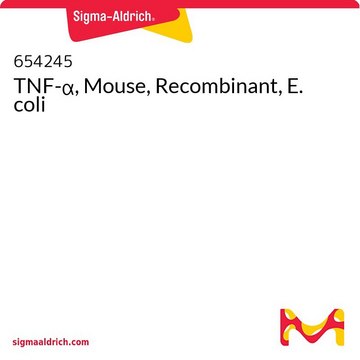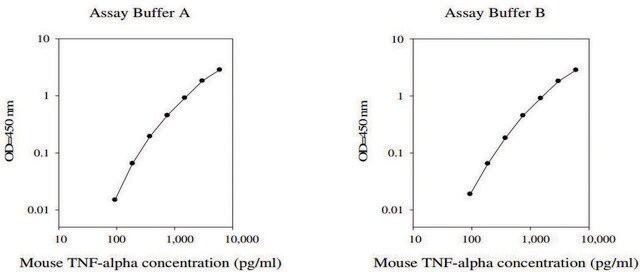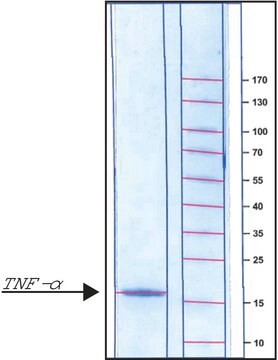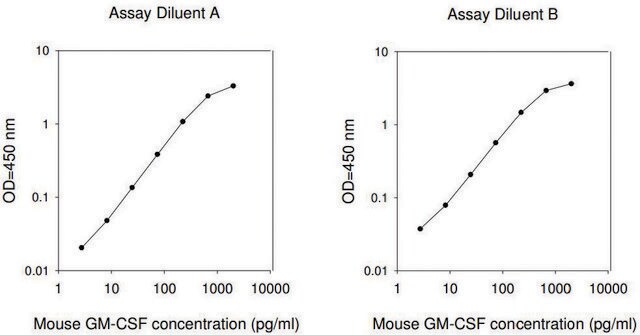T7539
Tumor Necrosis Factor-α from mouse
≥95%, recombinant, expressed in E. coli, powder, suitable for cell culture
Sinonimo/i:
mTNF-α, TNF-α
About This Item
Prodotti consigliati
product name
Tumor Necrosis Factor-α from mouse, TNF-α, recombinant, expressed in E. coli, powder, suitable for cell culture
Origine biologica
mouse
Livello qualitativo
Ricombinante
expressed in E. coli
Saggio
≥95%
Forma fisica
powder
Potenza
0.01-0.5 ng/mL EC50
PM
17 kDa
Confezionamento
pkg of 10 μg
pkg of 50 μg
Condizioni di stoccaggio
avoid repeated freeze/thaw cycles
tecniche
cell culture | mammalian: suitable
Impurezze
≤1 EU/μg protein endotoxin
Colore
white
Solubilità
water: soluble
N° accesso UniProt
Temperatura di conservazione
−20°C
Informazioni sul gene
mouse ... Tnf(21926)
Applicazioni
- to activate MS1 endothelium cells
- to induce lipolysis in adipocytes
- to study its effect on liganded and unliganded glucocorticoid receptor (GR) in interleukin (IL)-6 and IL-8 gene regulation
Azioni biochim/fisiol
Definizione di unità
Stato fisico
Avvertenze
Warning
Indicazioni di pericolo
Consigli di prudenza
Classi di pericolo
Eye Irrit. 2 - Skin Irrit. 2
Codice della classe di stoccaggio
11 - Combustible Solids
Classe di pericolosità dell'acqua (WGK)
WGK 3
Punto d’infiammabilità (°F)
Not applicable
Punto d’infiammabilità (°C)
Not applicable
Dispositivi di protezione individuale
Eyeshields, Gloves, type N95 (US)
Certificati d'analisi (COA)
Cerca il Certificati d'analisi (COA) digitando il numero di lotto/batch corrispondente. I numeri di lotto o di batch sono stampati sull'etichetta dei prodotti dopo la parola ‘Lotto’ o ‘Batch’.
Possiedi già questo prodotto?
I documenti relativi ai prodotti acquistati recentemente sono disponibili nell’Archivio dei documenti.
I clienti hanno visto anche
Articoli
Lipid Induced Insulin Resistance
Il team dei nostri ricercatori vanta grande esperienza in tutte le aree della ricerca quali Life Science, scienza dei materiali, sintesi chimica, cromatografia, discipline analitiche, ecc..
Contatta l'Assistenza Tecnica.









